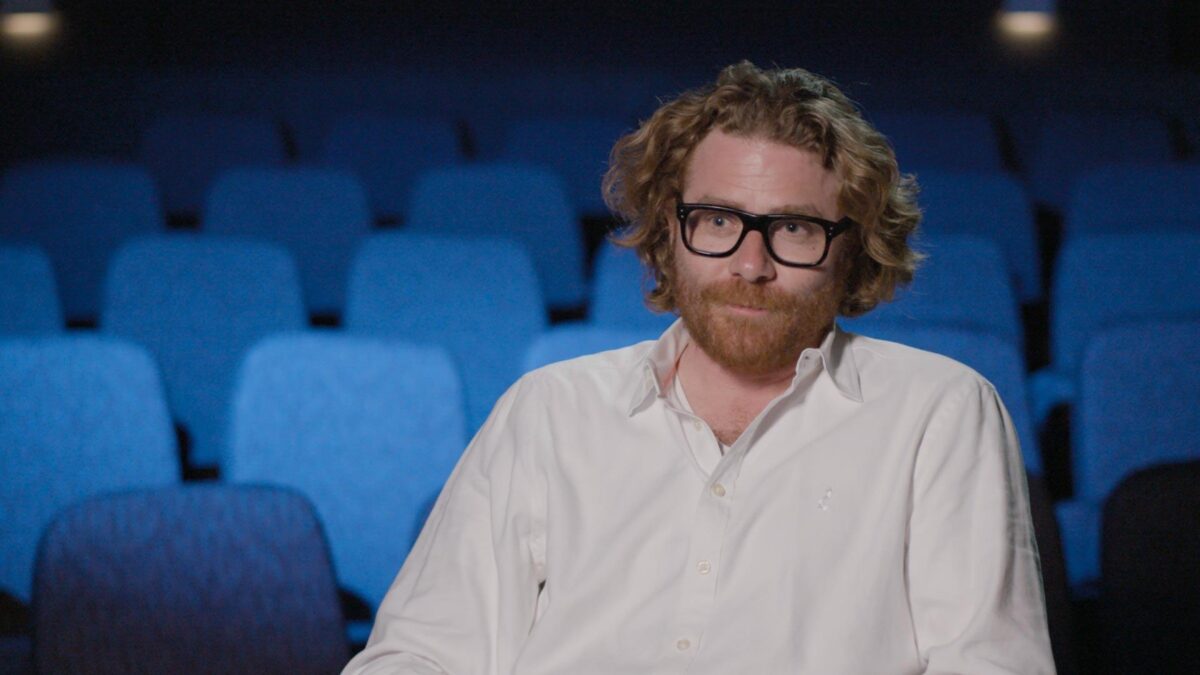
Cinefade sits down for an interview with Erik Messerschmidt ASC about the Cinefade VariND on Devotion.
This post was written by Oliver Janesh Christiansen from Cinefade.
We sit down with Oscar-winning cinematographer Erik Messerschmidt ASC and find out why he was excited to use the Cinefade VariND on the feature film Devotion as a tool to control exposure without affecting iris.
“When I heard about the Cinefade, I said, ‘Oh my god, this is a tool that I can actually control exposure with while keeping the iris position where I want for storytelling purposes,’ which in my opinion is really what it’s for,” cinematographer Erik Messerschmidt said. “The iris position has an enormous effect on how you tell the story because it controls depth of field. I was really excited to use the tool for that reason.”
What is ‘Devotion’ about and how did you get involved?
Devotion follows the first African American naval aviator and his partnership with his wingman Tom Hunter who’s played by Glen Powell with Jonathan Majors in the lead. We see them go to war for the first time in Korea. It’s really an extraordinary story.
I got involved because I knew some of the producers actually. I had done two other films prior with them. I got a call one day from Bruce Franklin, who was the line producer at the time, and he said, “Listen, I’ve got this movie, I think you should meet the director. I think you’d be good for it.” That afternoon, I was on a Zoom call with JD Dillard who directed the film. The call went two and a half hours, we had an incredible conversation. I hung up and said to myself, “Ah, that was a pretty good meeting.” My phone rang right after and they asked if I wanted to do the movie. It was a pretty quick process.
In your own words, what is the Cinefade VariND and how did you use it on ‘Devotion’?
The Cinefade VariND is a little contraption. It’s a doohickey. The device involves two pieces of glass, both polarisers, one of which is fixed and one is motorized. The motorized one rotates and therefore, it affects the transparency of the two pieces of glass together. It’s basically a variable neutral density filter. It controls the brightness that passes through and hits the lens.
The motor is controlled via a handset, which you can control from, let’s say 50 meters away, so I could be at the monitor and adjust it or we can give it to Alex or one of the other assistants.
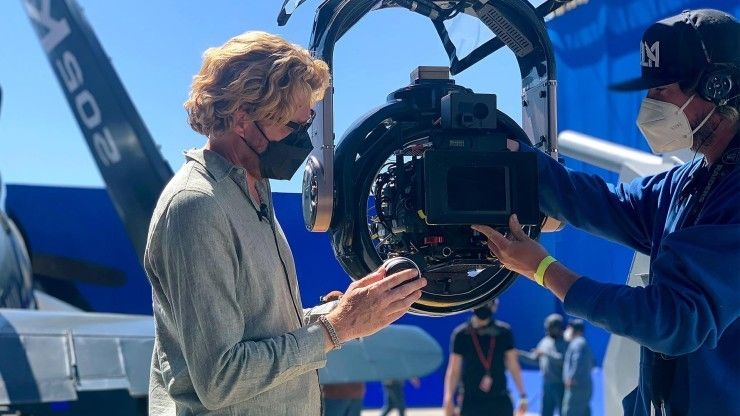
“What it really does, is it allows us to uncouple depth of field from exposure.“
In cinematography, we have been saddled with the problem of iris position being our predominant method for controlling exposure and sometimes we close the iris a little bit more than we would prefer. We end up with more depth of field than we would want because it’s the fastest and easiest means to control exposure for the camera.
When I heard about the Cinefade, I said, “Oh my god, this is a tool that I can actually control exposure with while keeping the iris position where I want it for storytelling purposes,” which in my opinion, is really what it’s for. The iris position has an enormous effect on how you tell the story because it controls depth of field. I was really excited to use the tool for that reason.
I want to set the iris where I want it for a given shot and stay there. The clouds may come and go, the sun position changes, the actor may improvise and go to a dark part of the set and you have to follow them.
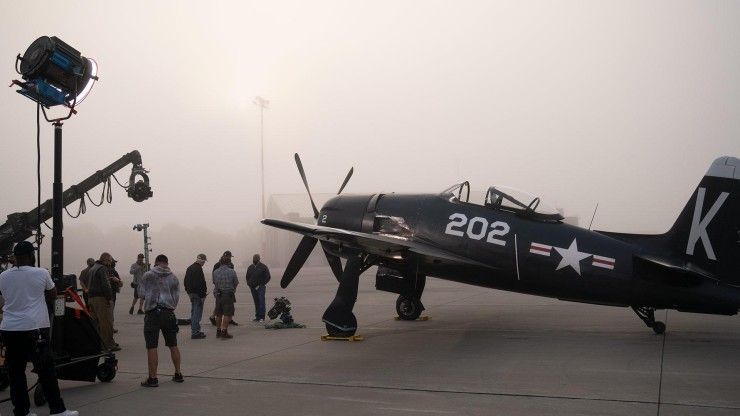
“I’ve always been looking for a tool with which I can control exposure without affecting iris.”
You can also put it in depth of field mode, and then you can untie the exposure from the iris and actually pull the depth of field, which is how we used it in Mank. In that instance, you’d give it to the director or I could hold it and we can adjust the depth of field during the shot.
Why not just use traditional ND filters rather than a variable ND filter?
Traditional ND filters are in distinct steps: one stop, two stops, three stops, etc. and there’s no nuance between them. There are half stop NDs but that’s about as much as you get. They also require changing and at least at the time before internal NDs existed in cameras, you had to bring the camera down on the crane, pull the glass filter and put a new one in. It could be tedious, especially if you’re chasing the sun, or you’re working quickly, or maybe you don’t have an opportunity to cut the camera. Being able to change ND, especially when the camera is on the crane, but being able to do it away from the camera and at a moment’s notice was an enormous benefit for us and really helped the movie.
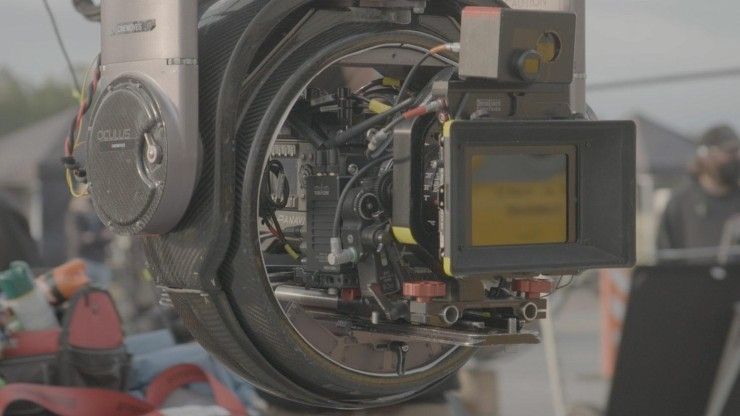
Cinematographers never have a moment to waste, so we’re always looking for the tools that make our work more efficient. The movie was challenging. It was not a particularly big budget film within its genre. We had just enough money to make it and we were looking for every opportunity to stretch the dollar. Time has an enormous effect on cost for the producer and ultimately for the cinematographer, so anything I could do to shave a little bit of time off the setup, to give the actors more time with the director, or to allow for time to move the planes, I was always looking for the tools that would speed up our workflow on set.
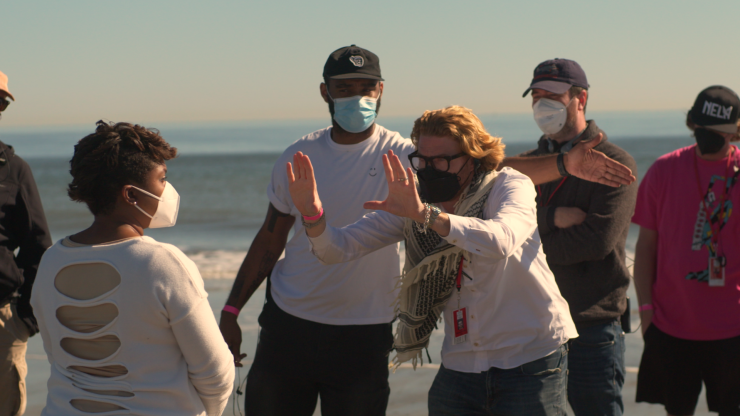
“When an airplane is coming in for a landing, you can’t say, ‘Hold on, I need a second to pull a filter,’ when you’re the DP. You have to just be ready. For that reason alone, the Cinefade VariND was essential to the process.”
With traditional glass filters, it’s a physical piece of glass you have to change in the matte box, so if the camera is elevated or if it’s rigged to a fire escape, it’s on a crane, on a cable somewhere, on a remote ship, or indeed on an airplane, to change the filter you have to physically get to the camera. Oftentimes in my position, you might choose to buy yourself a little bit of room and use the iris to adjust exposure. You make compromises because you can’t get to the camera.
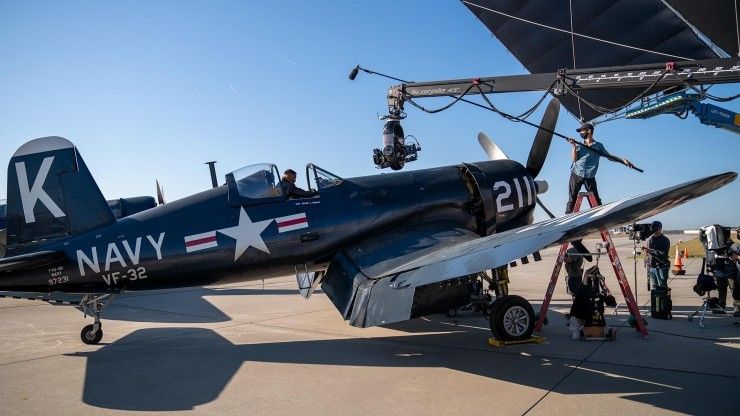
Taking the time as a DP to say, “Hold on, I need a moment, let me get up there,” means that the actors, the director, and everyone is looking at that camera assistant on a ladder going up to change the filter.
“The Cinefade allows us to work a little bit more like ninjas behind the scenes.”
How did the Cinefade VariND help you and the camera crew maintain your distance from the actors with covid protocols in place?
At the time, when we were making Devotion, COVID-19 was still very much part of the conversation on set. It still is, but at the time, pre-vaccine, we were being extremely careful around the actors and around the camera. The VariND allowed us to limit the amount of time that technicians were on the set with the camera. In many cases, we’d have the camera on the set on a remote head and the operator was off the set, so the actors could work without masks, without feeling like they were around too many people. Limiting our filter changes contributed to minimizing the staff on the set.
How did your 1AC Alex Scott respond to using the VariND?
The tool is really easy to learn. Alex, my first assistant who I’ve been with for years now is always looking for new technology that helps him. He’s critical and looks at it objectively and says, “Okay, this works for me, this doesn’t work for me.” He immediately accepted the Cinefade as a valuable tool and something that he could see could help us.
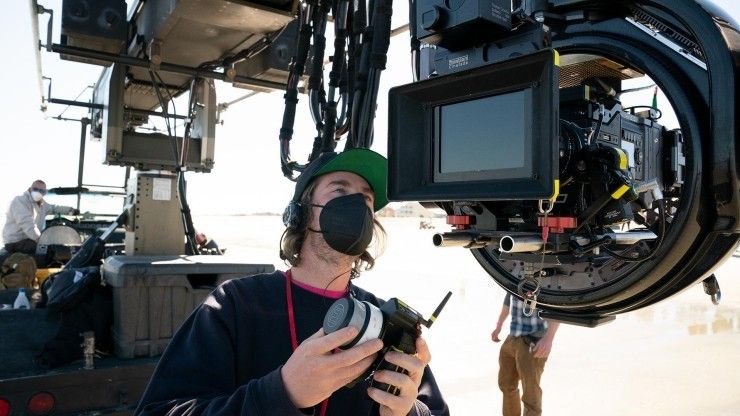
Was there a particularly challenging shooting day in which the Cinefade VariND helped you to expose a scene?
The opening shot of the movie involves just a shallow portion of the tail of the airplane in focus. It all happened at dawn and I knew I needed ND in the camera, but I wasn’t exactly sure how much and we weren’t sure if it was going to be cloudy or if it would be sunny. So, we put the Cinefade in, and then as the sun came up and the amount of light on the set raised, I was able to adjust the VariND to compensate for exposure while maintaining exactly the amount of depth of field the director and I wanted on the wings. We knew that we wanted just this shallow portion of it in focus on the rest all soft. The take we used, whether it was 6 A.M. or 6:45 A.M., they all have identical depths of field. That was essential for the shot’s success.
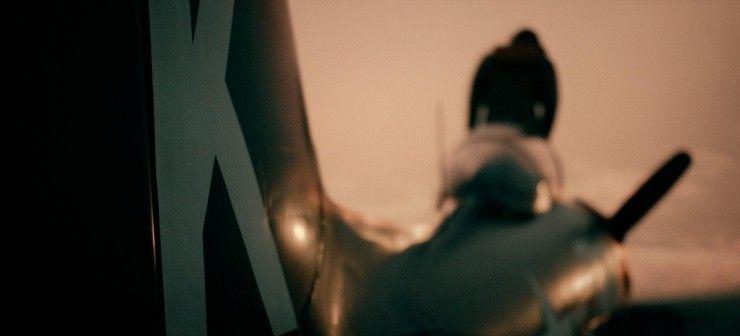
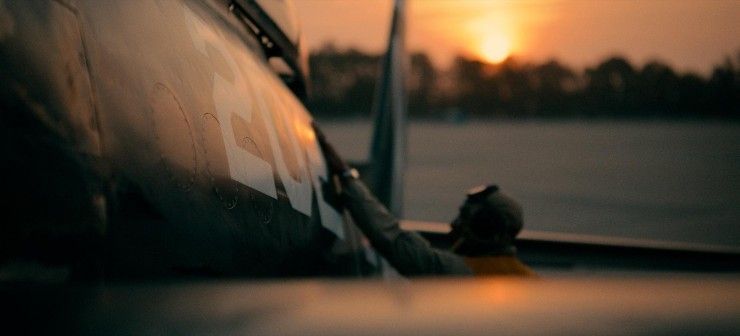
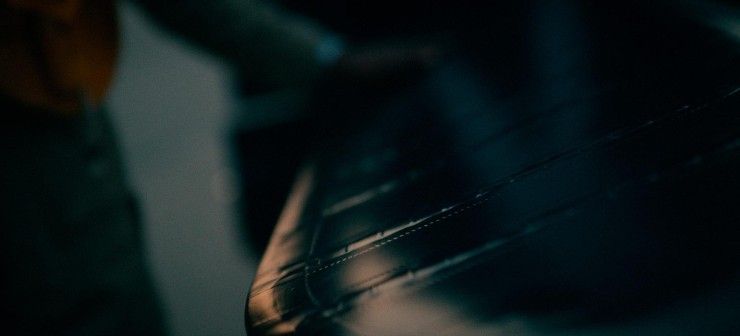
In cinematography, the sun is your enemy. And time is your enemy, because it’s always moving, and it’s never exactly where you want it. Having a tool around to compensate in those spare moments, where the sun is not exactly where you want it, or it’s a little too bright, or it’s a little too diffused with the clouds allows the workflow of the set to continue and is an enormous advantage.
“Every day we were day exterior on the set, I used the Cinefade.”
Did you experiment with the depth of field mode also?
JD is an explorer. He is eager to look at any tool and any idea that may or may not improve his film, or increase his experience making the film. I showed him the Cinefade and what it could do and I showed him what we had done with it in Mank and he said, “Oh, this is really cool.” We just started to explore different ways to use it on the set. And sometimes it was the perfect tool and other times it was too much and that’s the process of cinema, you go to the set with the director and you explore together.
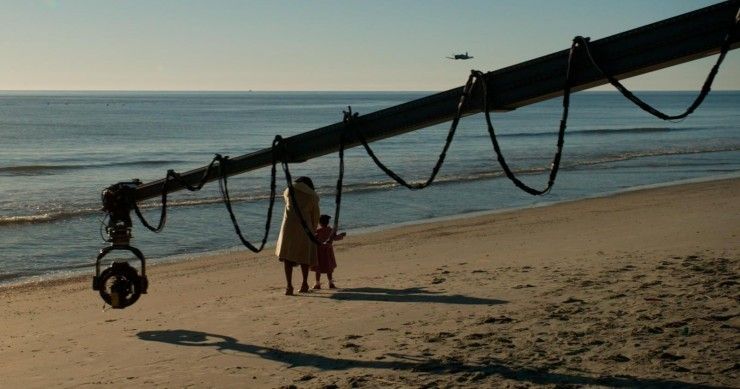
On one particular shot, we did actually adjust the depth of field. It’s very subtle, because it’s difficult to tell in the final cut. The shot starts out with Jesse’s wife and his daughter at bare minimum depth of field with the rest of the ocean and everything else quite soft and then as the planes come in, we rack the depth of field and closed down to like an 11 on the lens, so that they were both able to be more in focus.
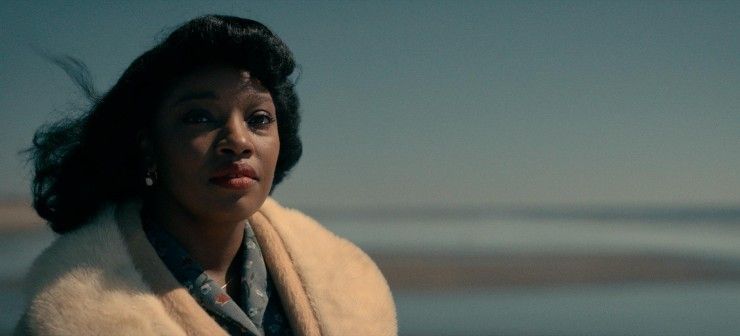
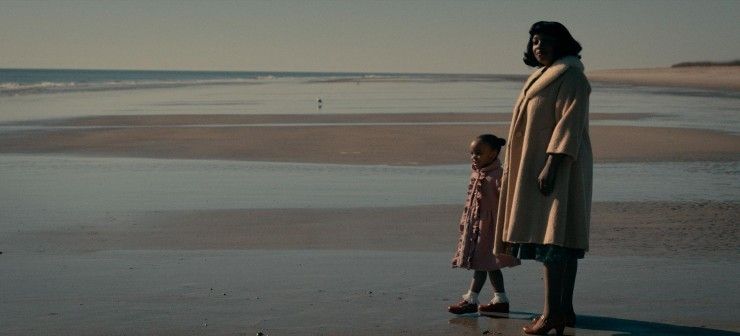
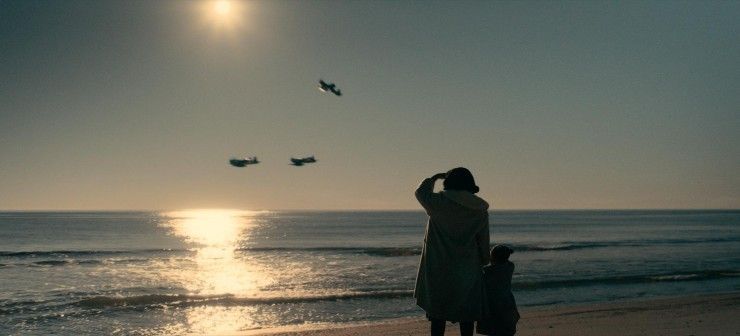
Is there anything else you’d like to add?
It’s important to find the tools and the people around that can help you create those moments, and hopefully, they’ll work together. Every tool is project specific and the film has to drive the choices and story has to drive the choices, the circumstances that drive the choices. So, I always pick the tools that I feel are best for the scenario that I’m confronted with.
I’m just really happy the Cinefade exists. I am thrilled that people like Oliver and his team are developing tools that are responding to problems we have as cinematographers and I hope that continues. It’s an important part of our process.
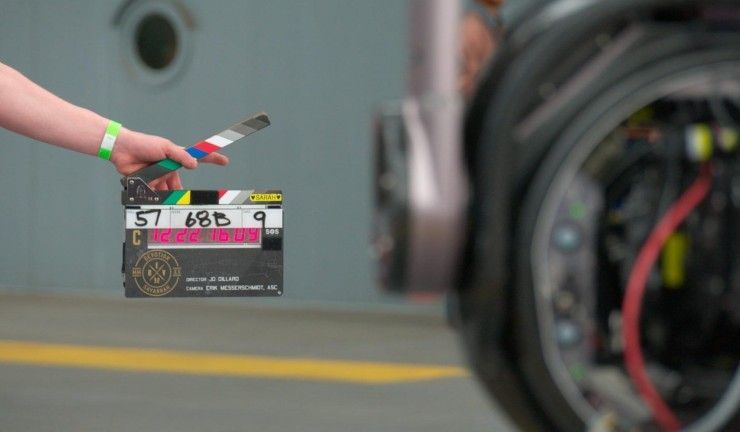
Find out more about the Cinefade VariND and how to hire a system from us at www.cinefade.com. Learn about Erik’s 1AC Alex Scott’s experience using a variable ND filter rather than traditional ND filters for the first time here or read more about how Messerschmidt used Cinefade mode to vary depth of field on Mank with director David Fincher.
You may also be interested in reading about how other cinematographers such as DP Shane Hurlbut ASC or DP Karim Hussain CSC used the Cinefade in their work as a storytelling tool or a precision exposure tool respectively and about how RotaPola mode was used on an automotive shoot for Porsche.














